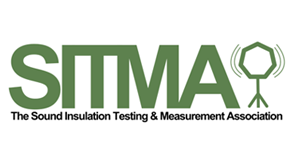Offices Nationwide

Sound Privacy
Privacy describes the perceived sound reduction across a wall. Privacy is a function of both sound insulation and background noise. Background noise is made up of services noise and environmental noise sources breaking in through the facade or open windows, vents etc.
If the background noise within a room is increased by 5 to 10 dB, the perceived level of privacy across a partition is also increased by 5 to 10 dB. Therefore, when looking at required sound insulation levels on-site, it is important to consider both the background noise in the receiver room and the sound insulation across the partition.



The Decibel Scale
The decibel scale gives an approximation of human perception of relative loudness. This is because the human ear has a logarithmic response to changes in sound level.
On the decibel scale, the smallest audible sound (near total silence) is 0 dB. A sound ten times more powerful is 10 dB. A sound 100 times more powerful than near silence is 20 dB.
The logarithmic nature of the dB scale means that each 10 dB increase represents a 10-fold increase in acoustic power. A 20 dB increase is therefore a 100-fold increase in power, and a 30 dB increase is a 1000-fold increase. However, an increase in acoustic power of ten times does not mean that the sound is perceived as being ten times louder. The ear perceives a 10 dB increase in sound level as only a doubling of sound loudness, and a 10 dB decrease in sound level as a halving of sound loudness.
The lower threshold of human hearing is around 5 dB. Normally speaking voices are around 65 dB. A rock concert can be around 120 dB.
Sounds that are 85 dB or above can cause hearing damage, and the higher the sound pressure, the less time it takes to cause damage. For example, a sound of 85 dB may take 8 hours to cause damage, whereas a sound of 100 dB may start to cause damage after only 30 minutes. A sound of around 150 dB can cause instantaneous hearing damage.



Reverberation Time
The ‘reverberation time’ of a space changes the way the space ‘sounds’ and can affect the intelligibility acoustic information. A high reverberation time can make a room sound muffled, loud and noisy. Rooms designed for speech typically have a low reverberation time, whereas a higher reverberation time can add depth, richness and warmth to music.
The reverberation time of a room is defined as the time it takes for sound to decay by 60 dB after an abrupt termination. It is linked to the total quantity of soft treatments and the volume of the room.



Point of Reference
Points of Reference *measured in dBA or decibels:
- 0 The softest sound a person can hear with normal hearing
- 10 normal breathing
- 20 whispering at 5 feet
- 30 soft whisper
- 50 rainfall
- 60 normal conversation
- 110 shouting in ear
- 120 thunder


Copyright 2025 E2 Specialist Consultants Limited
Company No. 06728970

































